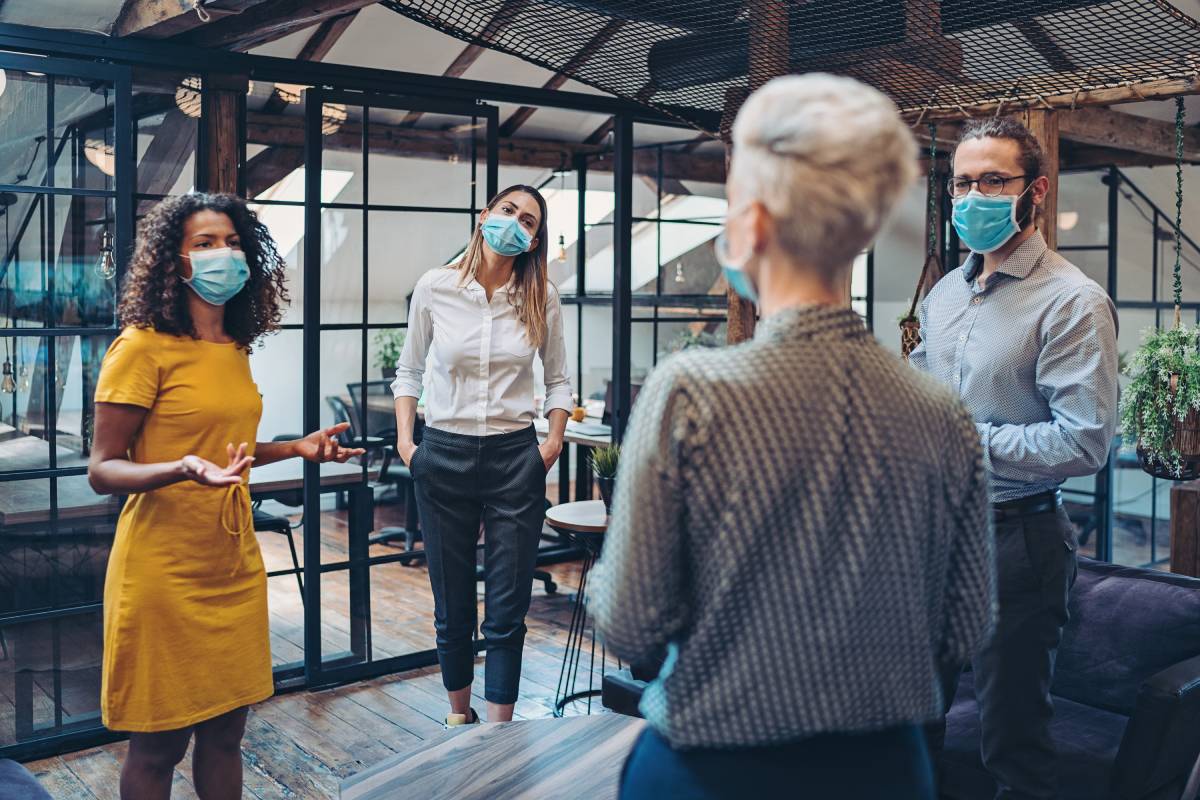Across the world, the delta variant of COVID-19 has prevented a return to pre-pandemic life. At the same time, many places in the United States are not returning to the extensive closures and shutdowns that marked the early stages of the pandemic. This is due to scientists’ improved understanding of SARS-CoV-2, including the creation and distribution of highly effective vaccines, as well as the importance of reducing interruptions to education for children. However, as many parts of the country remain open, the virus continues to spread. Ongoing research on COVID-19 provides suggestions and best practices for mitigating its transmission in indoor environments, like concert halls, restaurants, and schools.
Since the early days of the pandemic, researchers have devised a variety of experiments to study COVID-19 transmission. One study, named “RESTART-19,” organized over one thousand volunteers in an indoor arena (with stringent safety protocols), as part of a simulated concert [1]. Each participant wore a contact tracing device, allowing researchers to collect data about interpersonal interactions. Combined with computer simulations of fluid dynamics, the researchers determined that the indoor transmission of COVID-19 depends greatly on the ventilation system and hygiene practices. They found that the following practices were especially effective: increasing the number of entries/exits, staggered seating, some restriction of movement, and mask wearing. Generally, COVID-19 research has corroborated the RESTART-19 study. Some studies recommend additional ventilation measures, such as the avoidance of air recirculation, the installation of HVAC systems, and the use of UV air disinfectors [2][3]. Ultimately, factors like budget, time to installation, and building layout will dictate which of these are feasible for a given venue.
At a smaller scale, researchers have studied how specific human activities contribute to COVID-19 transmission. For example, a normal exhaled breath produces far less SARS-CoV-2 virus than conversational speech, singing, and exercising [4][5]. Although these results seem obvious today, they have a significant bearing on how mitigation measures are implemented. For example, venues with singing (e.g., concert halls or churches) or exercising (e.g., gyms) must meet a higher threshold of ventilation and mitigation compared to venues like libraries or museums. Similarly, venues can enforce behavioral rules among attendees, like discouraging shouting or exertion.
Until recently, many COVID-19 research efforts had to contend with a critical ambiguity: Does the virus primarily transmit through large droplets or through small aerosols? As of May 2021, the Centers for Disease Control and Prevention (CDC) acknowledged that the SARS-CoV-2 virus spreads through both large droplets and small aerosols [6]. The relative longevity of virus-laden aerosols, which can remain airborne for minutes or hours, demands extra protection whenever aerosols are routinely generated. For example, ENT procedures like nasal endoscopies and endonasal drilling produce aerosols that disproportionately expose healthcare workers to SARS-CoV-2 virus [7]. On the other hand, the presence of aerosols undercuts the effectiveness of typical “six-foot” social distancing measures, putting greater emphasis on mask use to prevent transmission [8]. With this improved understanding of COVID-19 transmission, stakeholders should take extra steps to reduce transmission through aerosols.
In conclusion, the appropriate mitigation measures for COVID-19 depend significantly on the venue, event, and other factors. As many parts of the United States remain open, or begin to re-open, these mitigation measures will reduce the burden on healthcare providers, prevent the emergence of novel variants, and save lives.
References
[1] S. Moritz, et al. The Risk of Indoor Sports and Culture Events for the Transmission of COVID-19. Nature Communications 2021; 12: 5096. DOI:10.1038/s41467-021-25317-9.
[2] L. Morawska, et al. How Can Airborne Transmission of COVID-19 Indoors Be Minimised? Environment International 2020; 142: 105832. DOI:10.1016/j.envint.2020.105832.
[3] Y. Ren, et al. New Method to Reduce COVID-19 Transmission — The Need for Medical Air Disinfection is Now. Systems-Level Quality Improvement 2020; 44: 119. DOI:10.1007/s10916-020-01585-8.
[4] R. K. Bhagat, et al. Effects of Ventilation on the Indoor Spread of COVID-19. Journal of Fluid Mechanics 2020; 903. DOI:10.1017/jfm.2020.720.
[5] T. Hussein, et al. Indoor Model Simulation for COVID-19 Transport and Exposure. International Journal of Environmental Research and Public Health 2021; 18: 6. DOI:10.3390/ijerph18062927.
[6] Scientific Brief: SARS-CoV-2 Transmission. Centers for Disease Control and Prevention.
[7] M. A. Kohanski, et al. Review of Indoor Aerosol Generation Transport and Control in the Context of COVID-19. International Forum of Allergy and Rhinology 2020; 10: 10. DOI:10.1002/alr.22661.
[8] M. Z. Bazant, and J. W. M. Bush. A Guideline to Limit Airborne Transmission of COVID-19. Proceedings of the Natural Academy of Sciences of the United States of America 2021; 118: 17. DOI:10.1073/pnas.2018995118.
